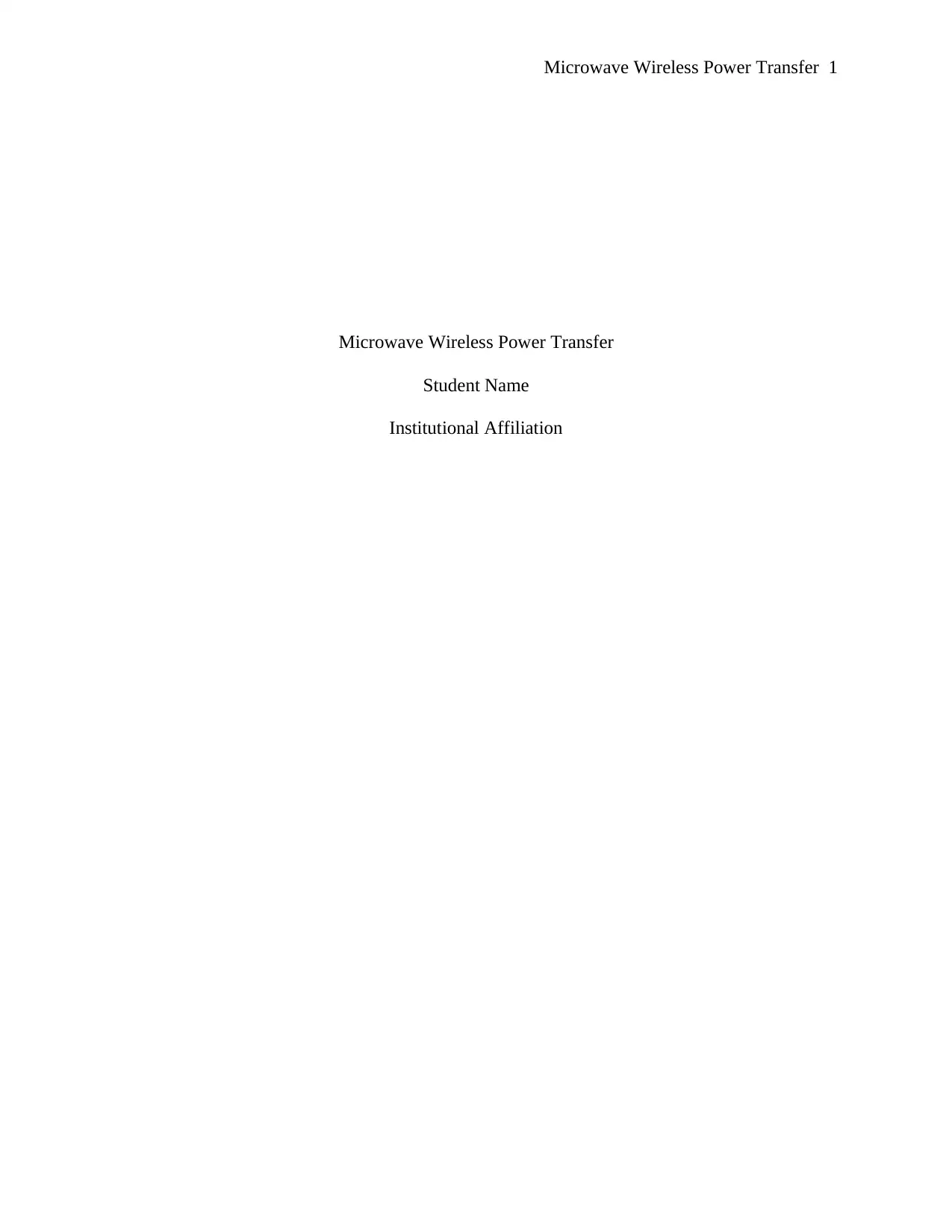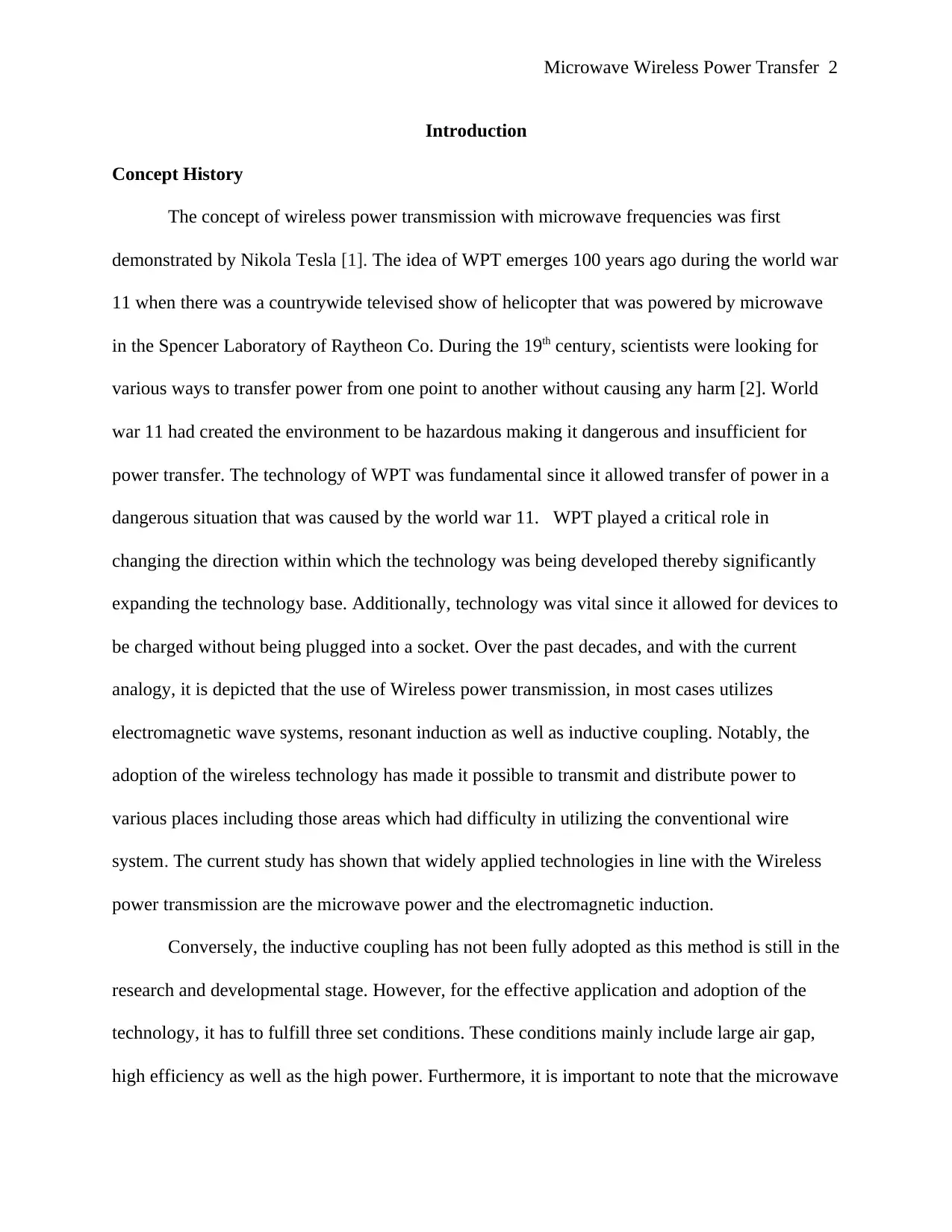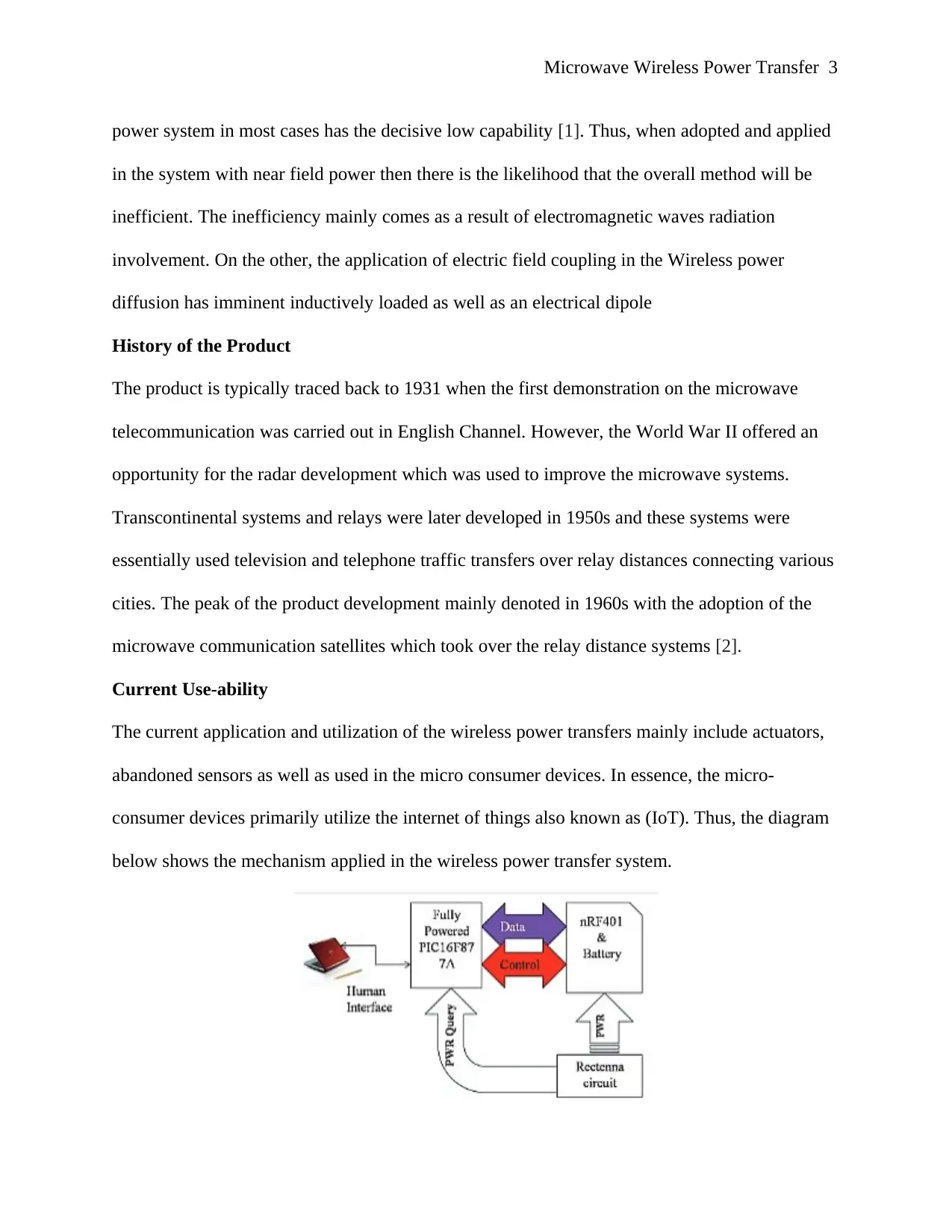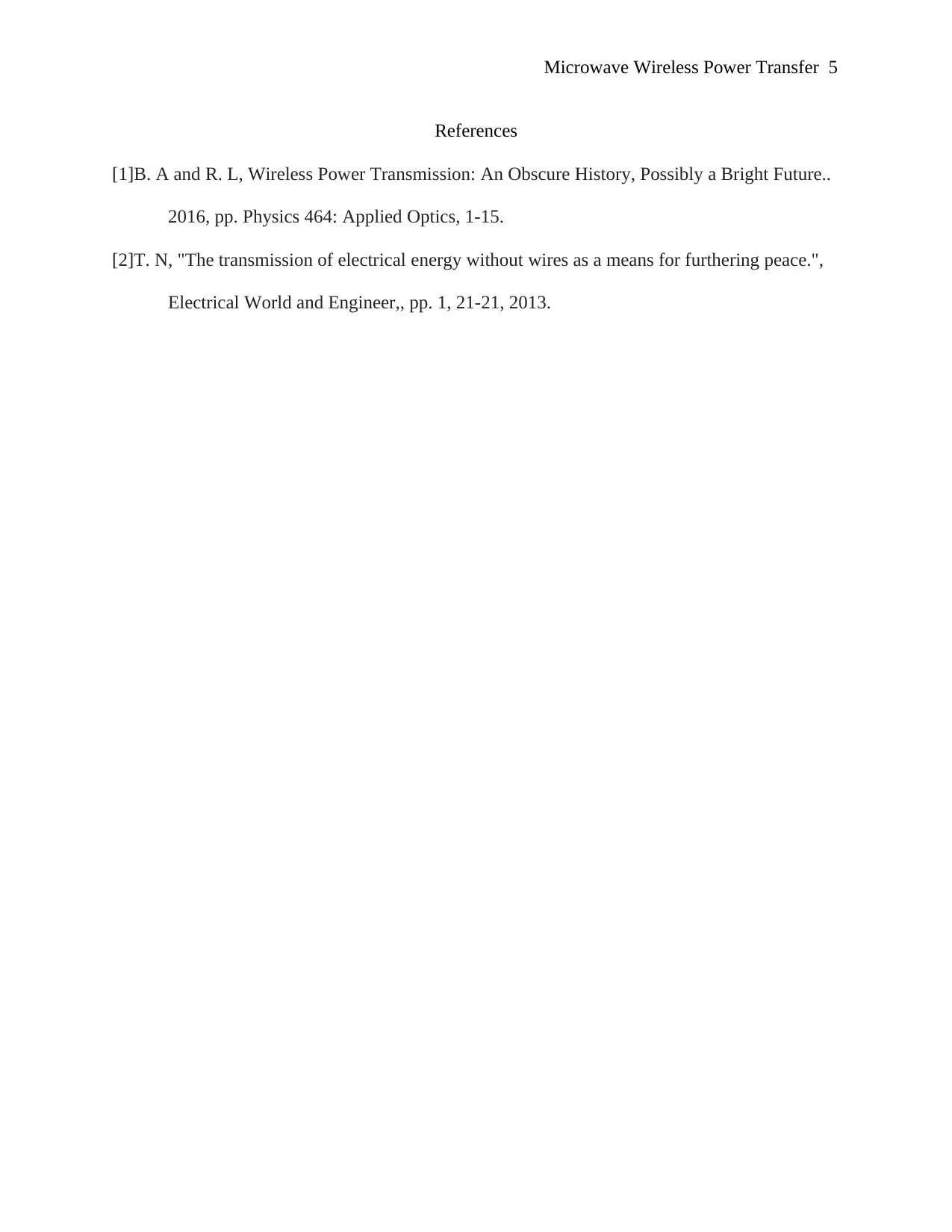Microwave Wireless Power Transfer: History, Use, and Systems
VerifiedAdded on 2023/06/10
|5
|703
|211
Report
AI Summary
This report provides an overview of microwave wireless power transfer (WPT), tracing its origins back to Nikola Tesla and highlighting its development through World War II to its current applications in micro consumer devices and the Internet of Things (IoT). It discusses the fundamental principles of WPT, including electromagnetic wave systems, resonant induction, and inductive coupling, while emphasizing the importance of achieving large air gaps, high efficiency, and high power for effective technology adoption. The report also touches on the history of microwave telecommunications, from early demonstrations in the English Channel to the development of transcontinental systems and communication satellites. It includes a system block diagram illustrating the mechanism applied in wireless power transfer systems and concludes with references to relevant research papers.
1 out of 5











![[object Object]](/_next/static/media/star-bottom.7253800d.svg)